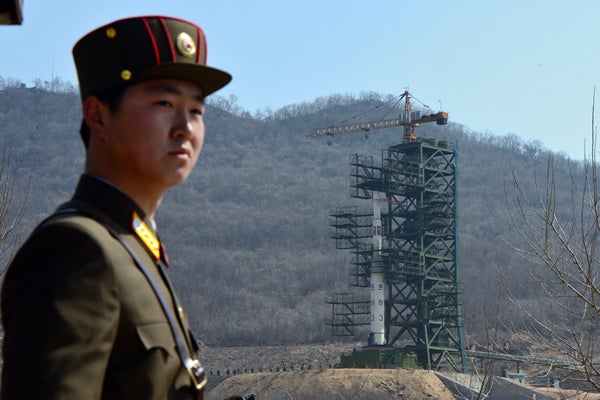North Korea Threatens ‘New Form’ of Nuclear Test
Bruce Klingner /
North Korea threatened on March 30 to carry out a “new form of nuclear test for bolstering up our nuclear deterrence.”
The regime declared it has a “more diversified nuclear deterrence” to be used for hitting medium- and long-range targets “with a variety of striking power.” Pyongyang also warned that “If the U.S. considers this a provocation, we are fully ready to take steps that the enemy can hardly imagine.… The United States should not act rashly and it will bear all responsibility in the event of a catastrophic event on the Korean Peninsula.”
North Korea’s threat is consistent with previous inflammatory though vague assertions about its nuclear and missile capabilities. In March 2013, Pyongyang threatened to turn Seoul and Washington into “seas of fire” through a “diversified precise nuclear strike,” using “lighter and smaller nukes unlike what they had in the past.”
Pyongyang is likely signaling it will test a uranium nuclear weapon—previous tests used plutonium. A successful uranium test would demonstrate that North Korea had developed a parallel path to augment its nuclear arsenal. Recent satellite imagery showed significant excavation activity at North Korea’s nuclear test site but no indication of an imminent test.
North Korea’s threat is in response to U.N. Security Council condemnation of Pyongyang’s recent launch of two No Dong medium-range ballistic missiles, which violated a U.N. ban. The Security Council is now deliberating on another resolution and additional punitive measures.
Similarly, in early 2013, the regime threatened nuclear attacks on Seoul and Washington, raising tensions to a dangerously high level to dissuade the Security Council from imposing new punitive measures in response to North Korea’s February 2013 nuclear test. Although Pyongyang is currently engaged in a periodic charm offensive, it has typically issued threats or initiated threats when the U.N. deliberates new resolutions.
If North Korea continues its threats, it could undermine South Korean domestic support for President Park Geun-hye’s March 28 announcement of her “Dresden Doctrine,” which again offered an olive branch of conditional engagement to the reclusive regime.
Experts predominantly assess that North Korea has developed several nuclear devices but has not yet mastered the ability to miniaturize the warhead or deliver it via missile. Media reports habitually declare that North Korean missiles cannot yet reach the United States. Based on this benign conclusion, policymakers presume the U.S. and its allies still have several years to diplomatically constrain North Korea’s nuclear program, pursue timidly incremental sanctions, and prepare military defenses.
However, this analytic construct is flawed since available unclassified evidence indicates North Korea has likely already achieved warhead miniaturization, the ability to place nuclear weapons on its No Dong medium-range missiles, and a preliminary ability to reach the continental U.S. As such, the U.S. and its allies face a greater threat today than is widely construed.
The regime’s inability to achieve its diplomatic and economic objectives through its current charm offensive will lead it to return to high-risk provocations. On March 31, North Korea fired artillery shells into South Korean waters that Pyongyang claims as its own. Seoul responded by firing 300 shells into North Korea waters. Last April, Pyongyang threatened attacks on South Korean islands in the area, which has been the site of several previous deadly clashes.
All of this is occurring amidst the U.S. slashing its defense budget and allies increasingly questioning the Obama Administration’s resolve to defend them against the growing North Korean and Chinese threats.

